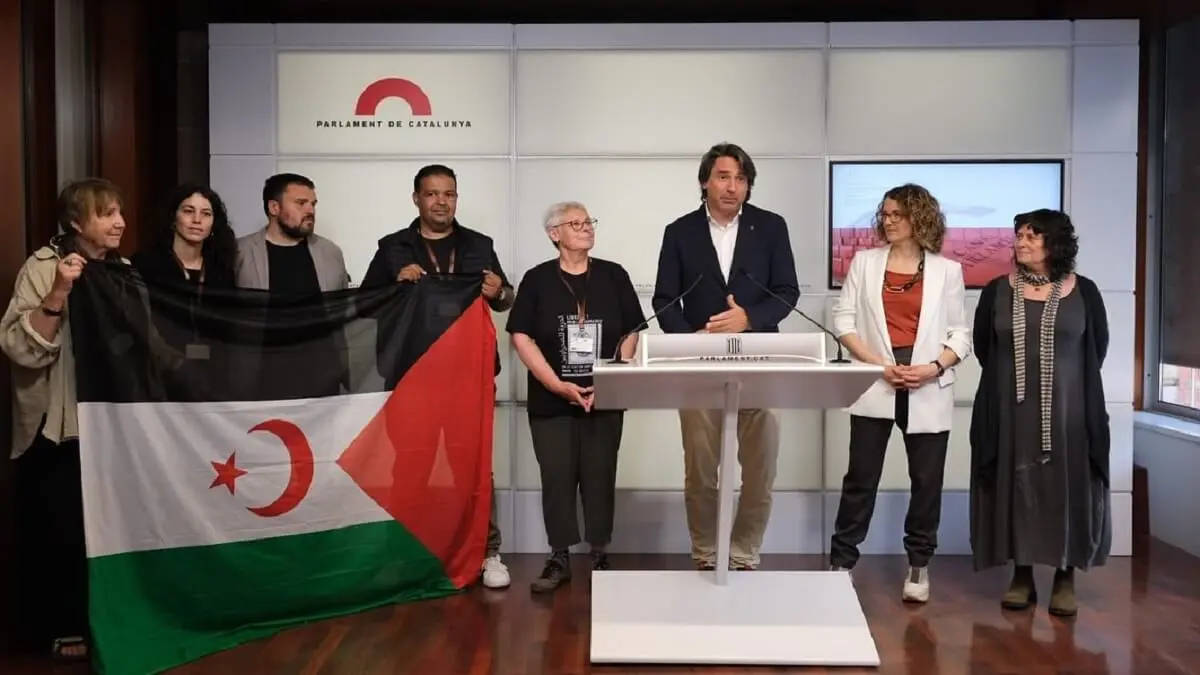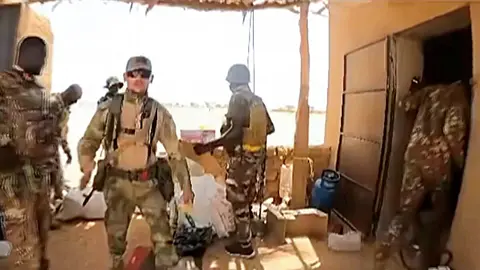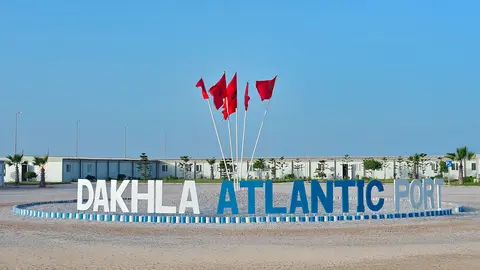'The March for Freedom': pro-Polisario propaganda behind a humanitarian façade

- A strategy of confrontation cloaked in human rights rhetoric
- The deliberate use of emotion and personal ties
- First incidents of the march: Béziers and Poitiers
- Spain: a crucial link in the propaganda chain
- A calculated provocation on the Moroccan border
- Beyond the humanitarian façade
This event, scheduled to begin on 30 March 2025 from Ivry-sur-Seine, on the outskirts of Paris, to the Moroccan town of Kenitra, prompts us to take a closer look at this case and shine a spotlight on the real interests and consequences behind this supposedly noble cause.
A strategy of confrontation cloaked in human rights rhetoric
A quick glance reveals that what the organisers present as a humanitarian initiative is in fact a carefully orchestrated campaign of propaganda and political confrontation. Claude Mangin, who calls himself a human rights activist, announced months ago a 3,000-kilometre journey that aims to cross the territories of three countries (France, Spain and Morocco) between March and June 2025, with the alleged aim of advocating for the release of Sahrawi political prisoners. However, this march seems specifically designed to generate diplomatic and media tensions in an extremely sensitive geopolitical conflict such as the one at hand.
The organisers, led by the Association of Friends of the Sahrawi Arab Democratic Republic (AARASD), have deliberately chosen a high-visibility format that guarantees maximum media coverage. It is no coincidence that the route includes strategic stops where parallel events such as round tables, conferences and meetings with elected officials are being organised, creating platforms to spread a one-sided narrative about a conflict that is much more complex and multifaceted than the organisers wish to present.
The deliberate use of emotion and personal ties
Particularly worrying is the exploitation of the personal case of Naâma Asfari, sentenced to 30 years in prison in 2013 for the events in Gdeim Izik, and husband of Claude Mangin. By focusing the narrative on an individual case with strong emotional connotations, the organisers seek to simplify a multidimensional geopolitical conflict, reducing it to a personal story that appeals to emotions and is more effective and sensationalist in the eyes of the public than any objective analysis of the political situation in the region. This is emotional blackmail, which is quite common in circles close to the Polisario abroad.
This personalisation of the conflict deliberately distorts the complexity of the legal and political situation in the Sahara in general, and of Asfari's case in particular. As we are led to believe, Asfari is simply a victim, and not an individual convicted for his participation in the Gdeim Izik incidents, events that could have had serious consequences for regional stability, with the loss of human lives.
It should be recalled that Asfari was convicted, along with 24 other Sahrawis, of ‘membership of a criminal gang, violence against the police resulting in death and mutilation of corpses’. According to the Moroccan sentences, they were held responsible for the deaths of 11 members of the Moroccan security forces during the clashes that followed the dismantling of the Gdeim Izik camp. The victims were Moroccan police officers and gendarmes, some of whom were run over by vehicles and others lynched, mutilated and killed with handmade knives, some even having their throats slit. The first trial was held in 2013 before a military court, which sentenced him to 30 years in prison. In 2017, a civil court of appeal upheld the previous sentence.
First incidents of the march: Béziers and Poitiers
Although the organisers insist on presenting the march as a ‘peaceful’ initiative, during the march through French territory there were already some incidents in the cities of Béziers and Poitiers, revealing the confrontational nature of the march and the premeditated search for media attention derived from these incidents. In Poitiers, around 20 Moroccan demonstrators gathered in front of the Casa de la Gibauderie, where Claude Mangin was presenting an exhibition on Western Sahara, to denounce the politicisation of the conflict. The confrontation between pro-Polisario groups and the demonstrators led to physical tensions, almost coming to blows, with attempts to enter the premises and heated debates that required police mediation. In Béziers, something similar happened, with incidents reported by Sahrawi journalists from Equipe Media, belonging to the Polisario media apparatus. These events, far from being anecdotal, follow a pattern: each incident is maximised in the media to reinforce the victimising narrative of ‘repression’.
Spain: a crucial link in the propaganda chain
Although it may seem that the choice of Spain as part of the tour is merely obligatory for purely geographical reasons, as a country of transit to the final destination, the truth is that this circumstance has suited the organisers down to the ground. Our country has a large number of pro-Polisario pressure groups with well-established historical links, as well as clear anti-Moroccan rhetoric from different sectors, which represents an ideal scenario for amplifying the unilateral message that they wish to spread. In short, the aim is for the march to take advantage of the numerous political, media and militant support that the Polisario Front maintains in Spanish territory.
The organisers are fully aware that in Spain they will find receptive media platforms and political circles willing to uncritically embrace their message. This strategic choice reveals that, far from seeking constructive dialogue, the march is designed to reinforce already established positions and further polarise public debate on the conflict. It is no coincidence that at the end of April they crossed the Spanish border, travelling extensively through Catalonia, reaching Castellón and diverting to Zaragoza before heading towards Valencia and Murcia, where they will arrive shortly.
Given the tight schedule and the accumulation of events in an area of hundreds of kilometres in just a few days, this march, understood as a somewhat epic journey on foot, as we have been led to believe, cannot be such. If you like, you could call it a caravan, as we imagine it will be carried out by motor vehicles. This is the only way to explain the presence of a woman of a certain age and her entourage in so many places in such a short period of time.
This march, with its pro-Polisario background, has prioritised events in institutions of autonomous communities with governments sympathetic to independence or the extreme left, which are its usual and submissive supporters in Spain, thus seeking to create a corpus of political statements that can be exploited in the media.
A clear example of this can be found in her visit to the ‘Parlament de Catalunya’, used as a central stage to amplify her political message. According to the official agenda of the Parliament, on 29 April, a joint press conference was held with the parliamentary groups of Junts per Catalunya, ERC, Comuns and CUP-Democràcia i Treball, together with representatives of the march. This event, broadcast live from the Press Conference Room, served to link the Sahrawi cause with Catalan independence, equating the ‘struggle for self-determination in Western Sahara with the Procés’. In fact, ERC and CUP-DT MPs took the opportunity to compare the situation of Sahrawi prisoners with that of Catalan independence leaders convicted for the 1-O events.
These acts or public appearances also reveal a multi-level pressure strategy: in institutions governed by or with a strong presence of like-minded parties, such as in Catalonia, political statements are sought that the Polisario Front can use in the media as ‘proof of democratic support’. On the other hand, in communities with more reticent or non-aligned governments (such as Madrid or Andalusia), street events are prioritised to generate unrest. The aim is also to project a false illusion of political consensus, as the statements come from entities with no competence in foreign policy and are supported only by a small number of parties.
A calculated provocation on the Moroccan border
Perhaps the most irresponsible aspect of this initiative is its planned culmination in Kenitra, Morocco. The organisers are well aware that this final stage is practically unachievable under the terms proposed, given Mangin's history of being banned from entering the country.
This practical impossibility reveals the true nature of the event: the aim is not really to reach Kenitra, but to generate a border incident that can be exploited by the media. The predictable rejection by the Moroccan authorities will be used to reinforce the victim narrative, regardless of any legal or diplomatic considerations that may exist. This strategy is part of a recurring pattern in recent months: the exploitation of visa denials – misnamed ‘expulsions’ – on flights to Laayoune or Dakhla.
Claude Mangin and his allies are well aware of the Moroccan protocol for activists, as in recent months numerous people linked to pro-Polisario NGOs, journalists and like-minded politicians have been refused entry on flights from Spain, either by concealing the true nature of their visit or by not arranging it in advance through the proper diplomatic channels. The same script would apply to the march to Kenitra, but even knowing this, they are continuing with it. In doing so, they are seeking to replicate the rejection that is already taking place at airports, turning an administrative refusal into a media ‘repressive act’.
The tactic replicates the strategy used with Naâma Asfari: presenting legal consequences (his conviction for the events in Gdeim Izik) as political persecution. Similarly, visa refusals are presented as ‘proof of authoritarianism’, omitting the fact that Morocco applies immigration rules similar to those of any sovereign state.
This approach does not seek dialogue, but rather to fuel confrontation: the predictable impossibility of entering Morocco from Spain for the participants of this event, as is the case with flights to the Sahara, would serve to reinforce the image of victimhood that the march seeks, diverting attention from the political background of an initiative that uses human rights as a smokescreen.
Beyond the humanitarian façade
Claude Mangin's ‘March for Freedom’ is a prime example of how seemingly noble causes can be exploited to serve specific political agendas, in this case with the Polisario in the shadows. This is also true, with certain differences, of the ‘Holidays in Peace’ programme, with the added aggravation in this case of the use of children for such purposes.
Far from contributing constructively to the resolution of the Sahara conflict, this initiative seeks to deepen divisions and hinder more productive diplomatic channels. Citizens, politicians and the media who encounter this march during its journey should approach it with a critical spirit, free from any militant impulse, and recognising the complexities of a conflict that cannot and should not be reduced to simplistic and outdated narratives such as those repeatedly put forward by its organisers and sponsors in the shadows. The true defence of human rights requires a genuine commitment to the truth in all its complexity, something that this march, with its predetermined agenda and inflammatory, propaganda-style approach, does not seem to offer.
It is necessary to question initiatives that, under the guise of defending human rights, seek to perpetuate conflicts and serve interests that have little to do with the well-being of the populations affected. The cause of peace, justice and the future of the Sahara deserves a more honest, balanced and constructive approach than that offered by this controversial march.



